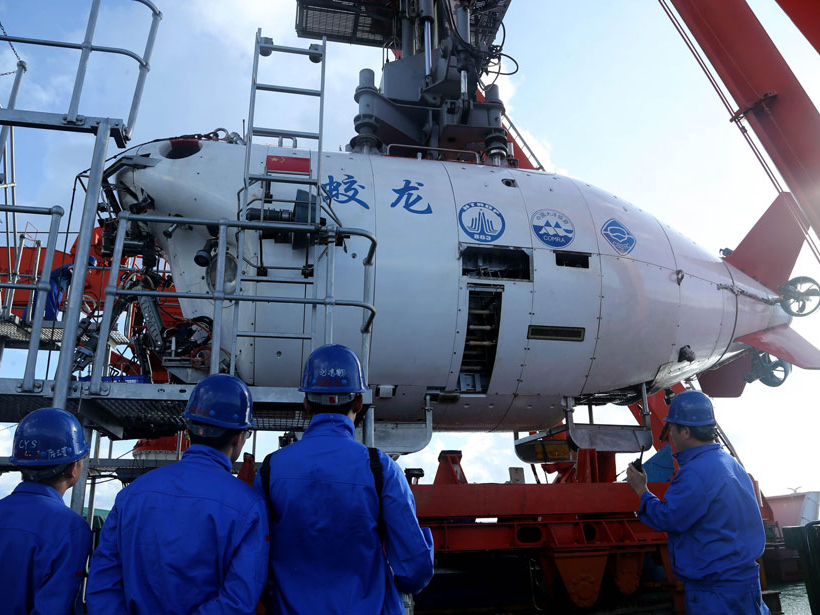The United States still leads the world in gross domestic expenditures on research and development according to the latest report on such spending. However, the U.S. global share of those activities has dropped from about 37% in 2000 to 26% in 2015, whereas China’s share has increased to 21%, reports the U.S. National Science Board’s (NSB) Science and Engineering Indicators 2018, a congressionally mandated analysis issued on 18 January.
The new comparison is based on data from 2015. In that year, the United States spent $496.6 billion on research and development (R&D), whereas China spent the equivalent of $408.8 billion. The year 2015 is the most recent one available for many indicators because gathering and analyzing R&D data induce a lag, according to an NSB analyst.

Recent trends show China’s R&D growth is surging. Between 2000 and 2015, R&D has soared by an average of 18% annually in China, whereas U.S. spending rose by about 4% annually, according to the report.
China has now surpassed the European Union and its $386 billion expenditure on R&D in 2015. At the time of the most recent previous version of the indicators report in 2016, the European Union was still slightly ahead of China according to the 2013 data that was the most recent at the time. If current trends continue, China could surpass the United States within a matter of several years, according to an Eos analysis of the data.
“The U.S. is still the largest supporter of science and technology, but China is coming on fast, and they are making big commitments to the future.”
“The U.S. is still the largest supporter of science and technology, but China is coming on fast, and they are making big commitments to the future,” NSB chair Maria Zuber told Eos. In addition to developing these indicators, NSB governs the National Science Foundation (NSF) and advises the president and Congress on science and engineering policy, research, and education issues.
“It’s not to say the sky is falling, because the sky isn’t falling. But one also doesn’t want to be asleep at the wheel. There is room for lots of countries to get involved, and it’s good for everybody. But, of course, the U.S. wants to maintain its leadership role.”
A Huge Increase in Global R&D
Global R&D expenditures, led by growth in China and other countries, reached $1.92 trillion in 2015 from $722 billion in 2000, up an average of 6.3% annually, or 266% in total over that time period.
After the United States, China, and the European Union, other countries—including individual members of the European Union—making major investments in R&D include Japan ($170 billion), Germany ($114.8 billion), South Korea ($70.1 billion), France ($60.8 billion), India ($50.3 billion), and the United Kingdom ($46.3 billion). Israel, which invested $13 billion, leads other countries in the percentage of its gross domestic product for R&D expenditures, at 4.25%, followed by South Korea’s 4.23%. By comparison, the United States is at 2.7%, and China is at 2.1%.
“We are involved in a global race for new knowledge.”
“We are involved in a global race for new knowledge,” NSF director France Córdova said at an 18 January briefing about the report. The United States “may be an innovation leader today, but other countries are rapidly gaining ground. It is not inconceivable that we may be overtaken in time. Our investment in basic research must remain a national priority.”
China Takes the Lead in Science and Engineering Articles
The report also tracks a broad range of other indicators, including the number of science and engineering (S&E) articles published, for which 2016 data are the most recent available. For the first time, China has overtaken the United States in that metric.
In 2016, China published 426,165 S&E articles, or 18.6% of the world’s total, with its numbers increasing from 189,760 in 2006 at an average annual growth of 8.4%. The United States published 408,985 S&E articles in 2016, or 17.8% of the world’s total, according to the report, increasing its output from 383,115 in 2006 at an average annual growth of 0.7%. Globally, the number of S&E articles increased from 1.6 million in 2006 to 2.3 million in 2016, an average annual increase of 2.9%.
Education and Gender Diversity Trends
In science, technology, engineering, and mathematics (STEM) education, the United States awarded about 40,000 S&E doctoral degrees in 2014, the most recent year for which data were analyzed, with China awarding 34,000. In 2000, the United States awarded about 25,000 S&E doctoral degrees, with China awarding fewer than 10,000.
Of 7.5 million S&E bachelor’s level degrees awarded worldwide in 2014, India led with a 25% share, followed by China at 22%, the European Union at 12%, and the United States at 10%.
Another indicator tracked the growth of academic R&D expenditures by technical field. The average annual growth rate for the geosciences in the United States was just 0.1% from 2007 to 2016, the lowest growth rate of the assessed fields; it grew 3.8% from 1997 to 2006. By comparison, engineering grew 3.2% from 2007 to 2016, down from 4.8%.
Women in 2015 constituted just 28% of workers in S&E occupations in the United States. For the category of Earth scientists, geologists, and oceanographers, the number was 22.7%, and for physicists and astronomers, it was 18.4%.
Zuber told Eos she hoped the release of the new report would encourage the U.S. government to invest more in science across all federal agencies and to provide funding stability. “If you don’t know what the budget is going to be, it’s very hard for federal agencies to do long-term planning,” she said.
—Randy Showstack (@RandyShowstack), Staff Writer
Citation:
Showstack, R. (2018), China catching up to United States in research and development, Eos, 99, https://doi.org/10.1029/2018EO091489. Published on 24 January 2018.
Text © 2018. The authors. CC BY-NC-ND 3.0
Except where otherwise noted, images are subject to copyright. Any reuse without express permission from the copyright owner is prohibited.

